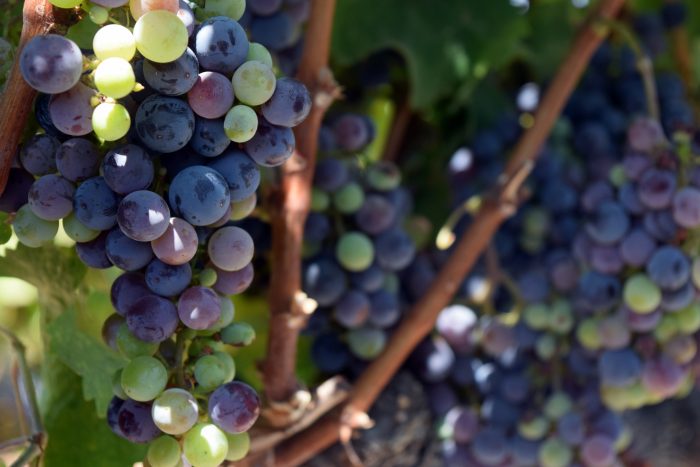Nothing beats the jammy, robust-tasting, and dark-fruited glass of some zinfandel wine. From wine-tasting parties to a fancy dinner at home, it’s a beloved favorite for most wine lovers. But where does this well-loved wine come from, and what makes it a crowd favorite?
Zinfandel, also commonly known as ‘zin’, is a famous wine made from a wine grape with black skin grown in California. There’s also a long tradition of cultivating farms of zinfandel grapes in the sunny and warm regions of Chile, South Africa, and Italy.
While zinfandel is primarily known for being a red wine with a signature dry flavor, you can also try the deliciously sweet white variety of zinfandel, and the special edition zinfandel-infused gin from Blaauwklippen.
Getting a lot more curious about zin? This article will show you a simple zinfandel wine guide and the top reasons why it’s different from other wines.
The Ravishing History Of Zinfandel

The zinfandel grape originally comes from Croatia from a signature varietal of wine grapes of that region, though now there are several other varietals of the zinfandel grape that developed as the crop spread. From there, it spread through the Mediterranean region and, eventually, to America in the early 19th century where it became immensely popular, both the grapes and the wine they produced. By the end of the 19th century, zinfandel grapes were planted up and down California and a hit nation-wide.
In 1972, the Sutter Home Winery marketed a new type of zinfandel wine, ‘White Zinfandel,’ that became immensely popular and brought about a rebirth of zinfandel. ‘White Zinfandel’ became known for its signature sweetness that results from the particular process used to ferment it that is also commonly used to ferment other pink, also known as blush or, more popularly, rosé, wines.
An Incomparable Flavor Profile

The dark zinfandel grapes are used to produce all varieties of zinfandel wine, regardless of the color of the wine. Grape skins are always used to produce red wine, but it is more unusual to incorporate them into making a white wine. That is because a white zinfandel, to be explained in greater detail below, actually is pink in color, rather than the signature color of a traditional white wine. The prototypical zinfandel is a dry wine with a vibrant red color, a rich taste, and a smoky finish. It is moderately acidic, sometimes ranging into highly acidic, and has a higher alcohol content than most other red wines.
On the other hand, the white zinfandel has dry and sweet fruity flavors of raspberry, cherry, strawberry, and melon. Unlike the red, the white has a lower percentage of alcohol than the average alcohol content for wine in the United States.
The Unique Wine-Making Process

The winemaking production of zinfandel is fundamentally the same as making any other wine and just as simple. It starts with the harvesting and pressing of zinfandel grapes. Then, fermentation follows, wherein juice from the grapes is preserved and, over time and through natural processes, turned into wine.
All zinfandel wines are made equally. However, for the white, the zinfandel grape skins are removed after the initial juice pressing, resulting in the wine’s signature hue and light body.
The level of sweetness or dryness depends on how long the zinfandel is fermenting for. If a vintner opts for a briefer fermentation period, the wine will end up with more sugar at the end of the process, causing the wine to be sweeter than usual, such as in Sutter’s ‘White Zinfandel.’ If the vintner completes the entire fermentation process, the yeast that naturally occurs in the juice consume all of the sugar available in the mixture, resulting in a dry wine due to the low sugar content. Regardless of your preference, the variety that comes from having these options means there’s a zinfandel out there that will suit you.
The Best Serving Temperature

Zinfandel follows the same rules of serving temperature as any other wine varietals, regardless of color.
A white zinfandel should be chilled and served at least at 45º F. This ensures that the wine will continue to be crisp while preventing it from becoming too sweet. As for a red, a red zinfandel should be somewhere between 60-65º F.
Pro-tip: If you’re expecting some guests over, chill the wine you plan on serving overnight and then set it out thirty minutes before they arrive.
Can Be Paired With Almost All Types Of Dishes

Depending on which color of zinfandel you’re choosing, you can find a zinfandel to match pretty much any dish you feel like serving. The variety of flavor profiles and the versatility of the zinfandel makes it an excellent match for a formal steak dinner or for a summer barbeque with your family and friends.
The red zinfandel matches just right with most meats, such as beef, chicken, lamb, pork, and turkey. Any type of barbecue dishes, pasta, pizza, curries, and smoked meats are also best consumed with this dry red. It’s also wonderful with hard cheeses, like a Manchego or cheddar. If you’re looking for something sweet to pair with this wine, try out some dark chocolate, pecan pie, or caramel!
The white zinfandel is the best match for all seafood variants, creamy pastas, and pork. It also makes a great complement to Asian and Creole cuisines. If you’re planning to pair this wine with cheeses, look for softer and mild selections like a Havarti, Gruyère, and mozzarella.
Overall
Whether it’s a fancy restaurant dinner or a romantic candlelit weekend date, zinfandel wine is definitely the best way to go. While this popular wine is now practically synonymous with California, it’s actually a Croatian original that has been around for centuries. With so much versatility, variation, quality, and price points, there are a lot of reasons why you should add a bottle of zinfandel to your dinner plans. Be sure to pop one open for as your next decadent treat! Cheers!




